Abstract
Nematode populations is stabled ewes of the Rimouski region were studied by means of fecal worm egg counts, fecal culture of larvae, and worm counts at necropsy. It was found that during the winter strongyle egg counts were low, Trichostrongylus eggs being most numerous, The stronglye egg counts increased following lambing and reached peak in June. Ostertagia spp was the principal contributor to this “spring-rise”, with substantial contribution from Trichostrongylus and Haemonchus contortus. The bulk of adult worm populations in winter, however, was made up of Trichostrongylus, whereas the great majority of the populations of Ostertagia spp, H. contortus and Nematodirus spp were inhibited in development at the fourth larval stage. All the worms recovered at necropsy in spring were adults, coinciding with the “spring-rise”.
Full text
PDF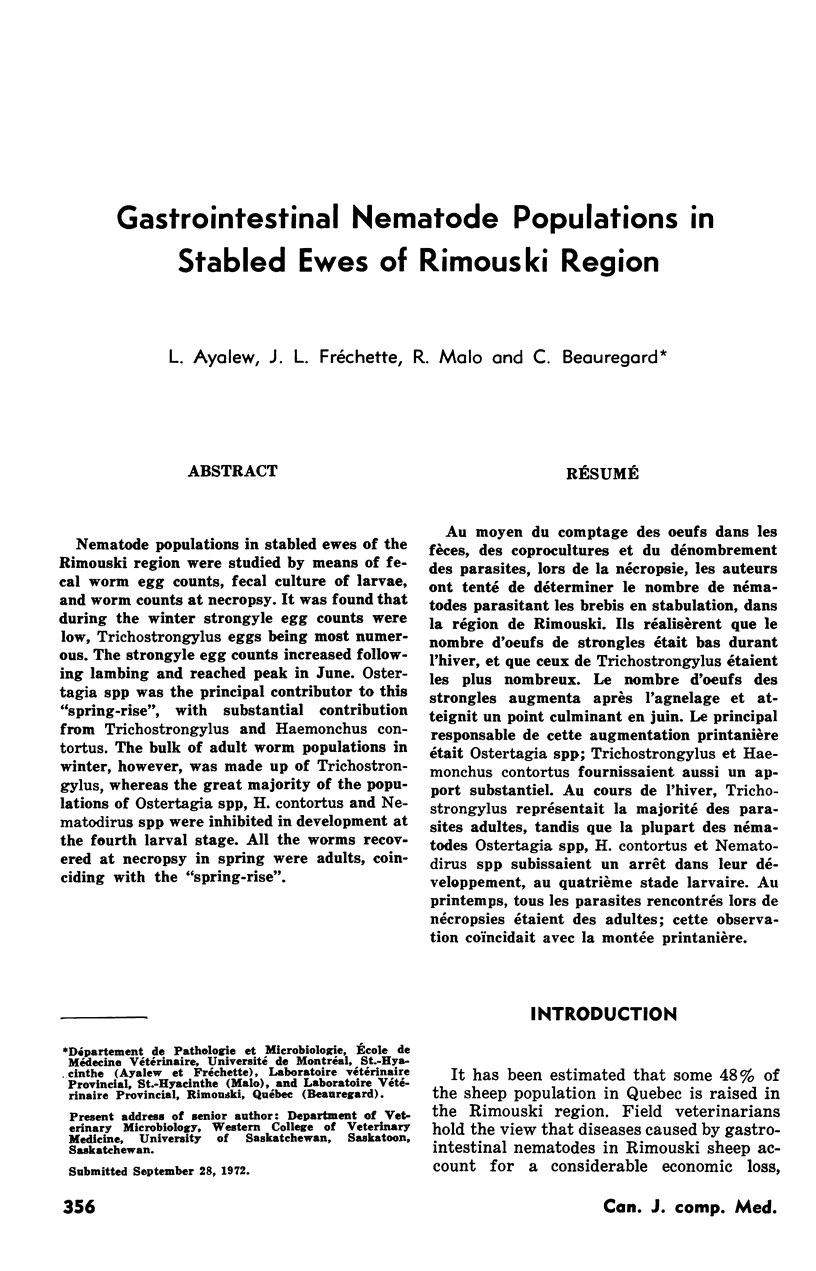
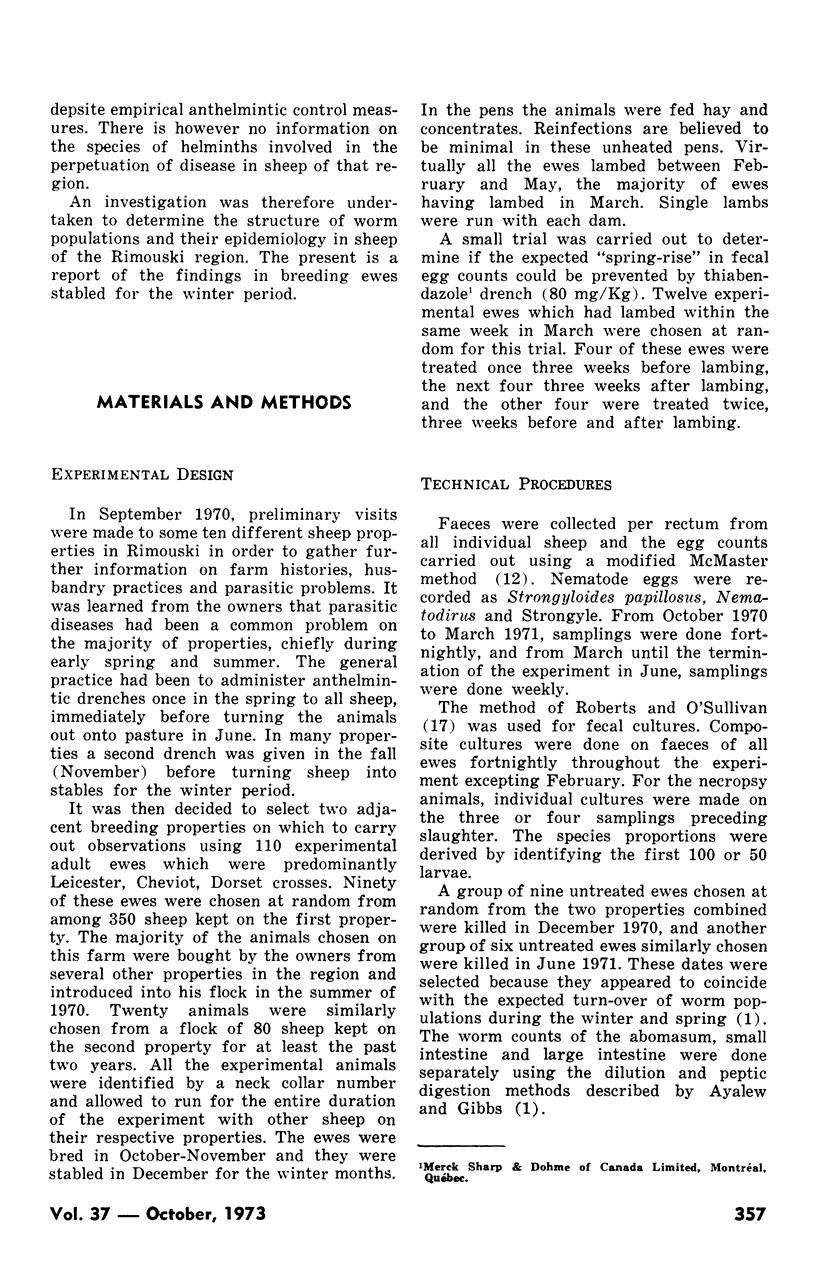
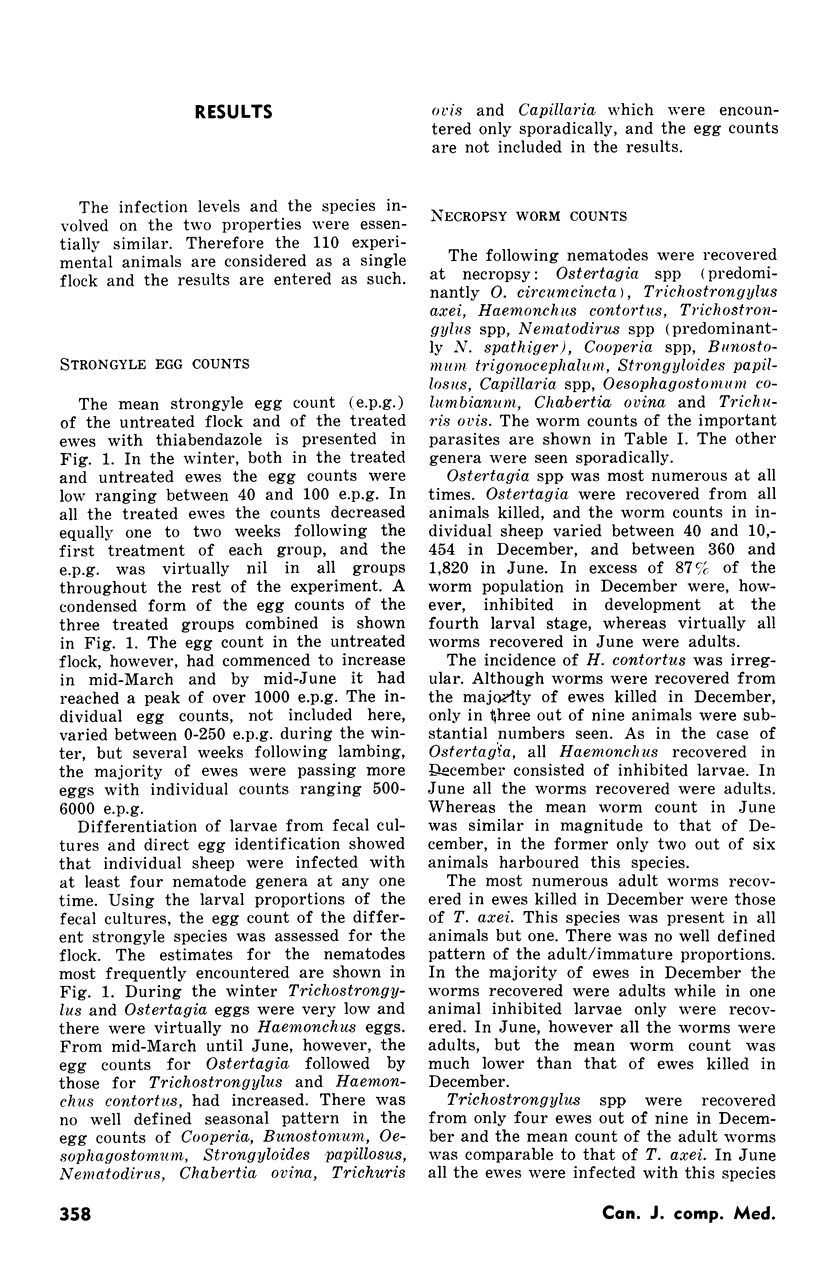
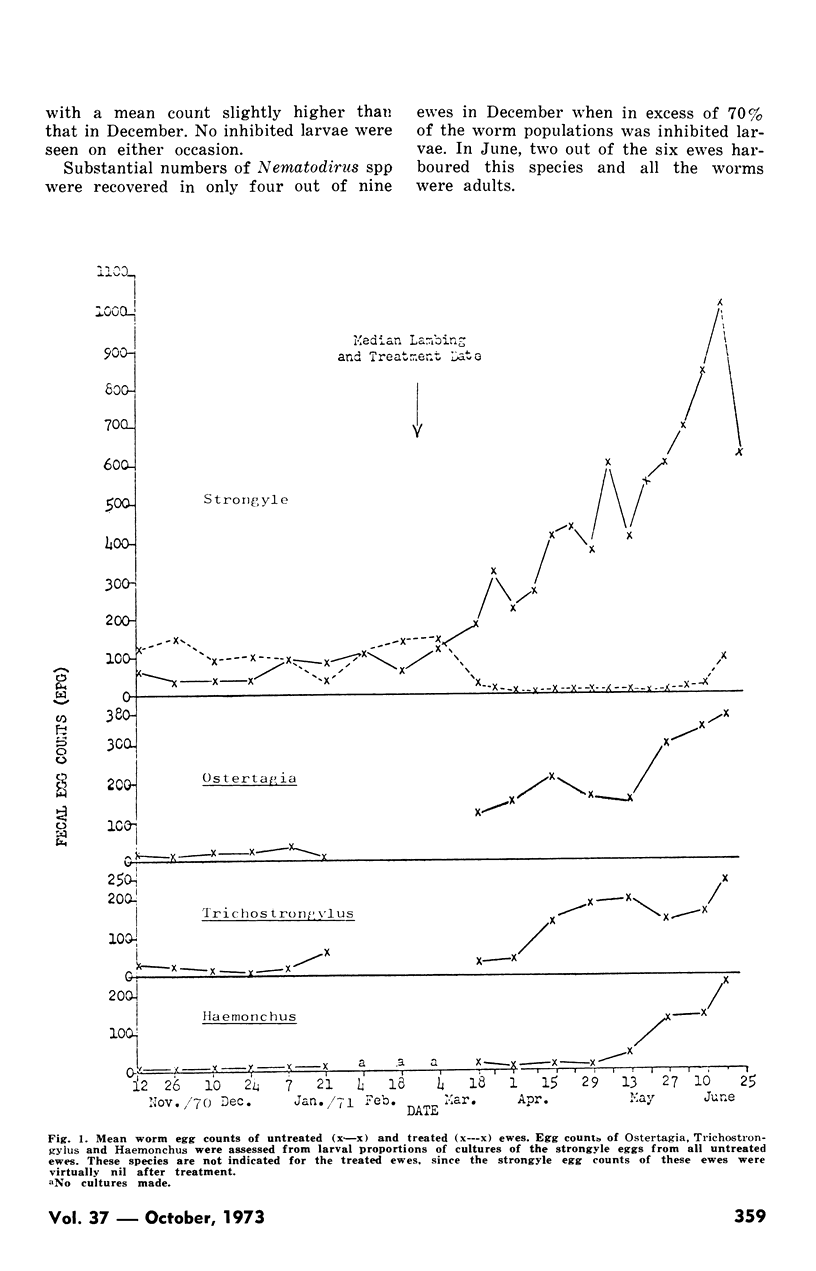
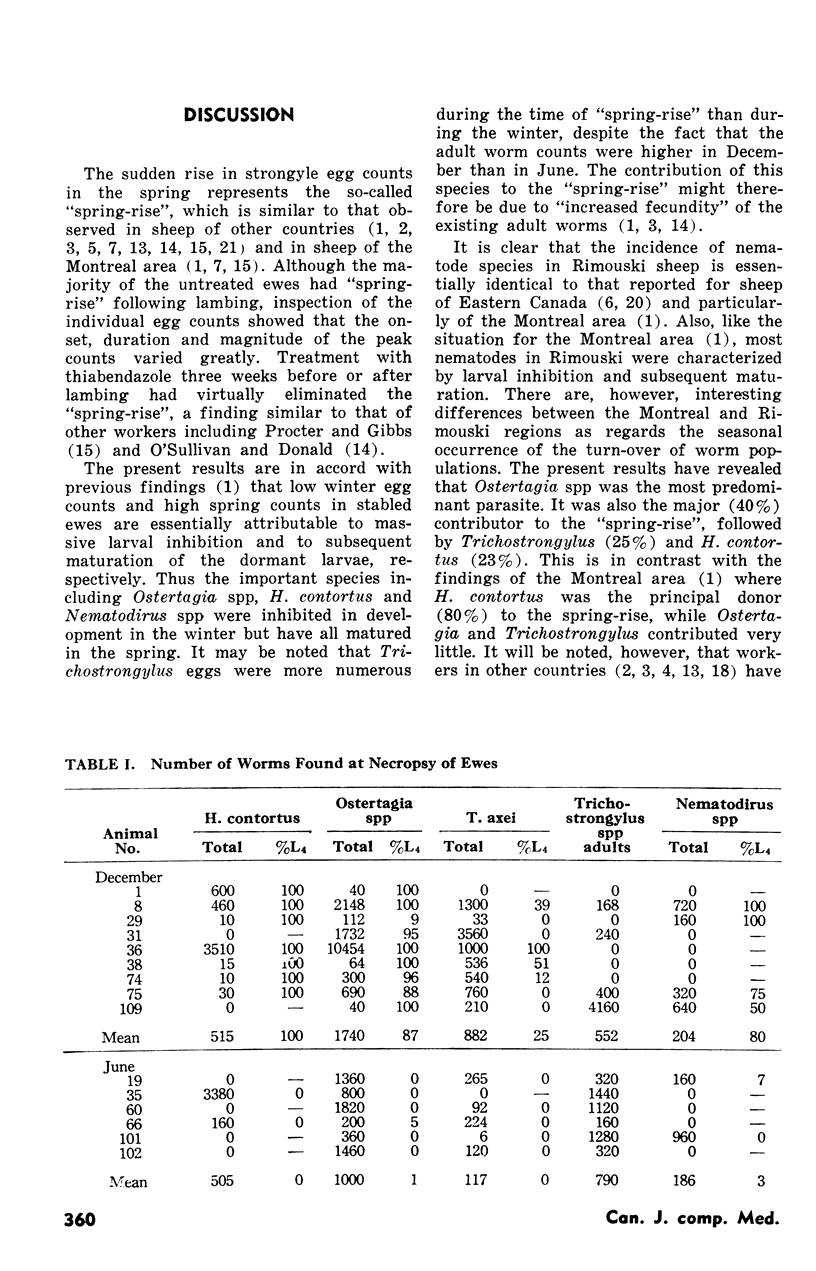
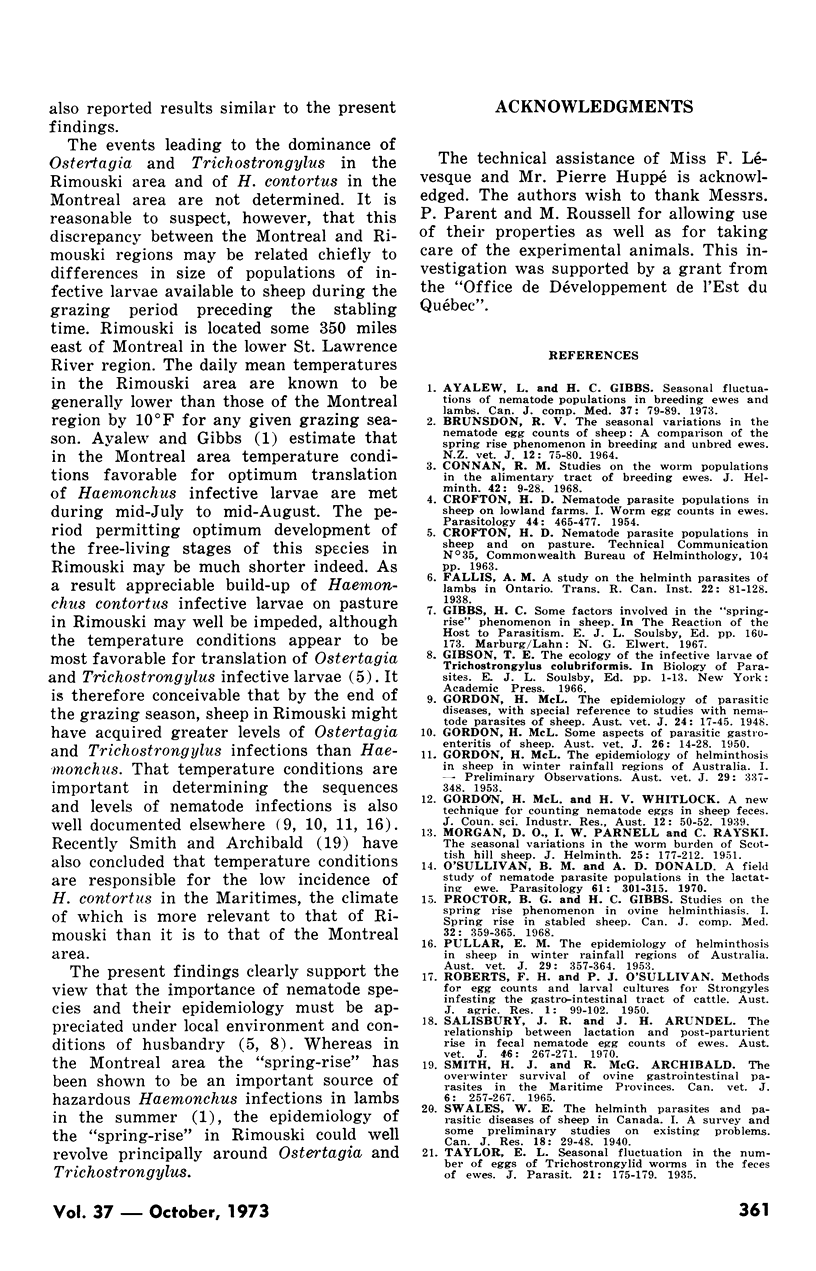
Selected References
These references are in PubMed. This may not be the complete list of references from this article.
- Ayalew L., Gibbs H. C. Seasonal fluctuations of nematode populations in breeding ewes and lambs. Can J Comp Med. 1973 Jan;37(1):79–89. [PMC free article] [PubMed] [Google Scholar]
- Brunsdon R. V. The seasonal variations in the nematode EGG counts of sheep: a comparison of the spring rise phenomenon in breeding and unmated ewes. N Z Vet J. 1964 Aug;12(4):75–80. doi: 10.1080/00480169.1964.33556. [DOI] [PubMed] [Google Scholar]
- CROFTON H. D. Nematode parasite populations in sheep on lowland farms. 1. Worm egg counts in ewes. Parasitology. 1954 Nov;44(3-4):465–477. doi: 10.1017/s0031182000019144. [DOI] [PubMed] [Google Scholar]
- Connan R. M. Studies on the worm populations in the alimentary tract of breeding ewes. J Helminthol. 1968;42(1):9–28. doi: 10.1017/s0022149x00027176. [DOI] [PubMed] [Google Scholar]
- O'Sullivan B. M., Donald A. D. A field study of nematode parasite populations in the lactating ewe. Parasitology. 1970 Oct;61(2):301–315. doi: 10.1017/s0031182000041135. [DOI] [PubMed] [Google Scholar]
- Procter B. G., Gibbs H. C. Studies on the spring rise phenomenon in ovine helminthiasis. I. Spring rise in stabled sheep. Can J Comp Med Vet Sci. 1968 Jan;32(1):359–365. [PMC free article] [PubMed] [Google Scholar]
- Salisbury J. R., Arundel J. H. The relationship between lactation and post-parturient rise in faecal nematode egg counts of ewes. Aust Vet J. 1970 Jun;46(6):267–271. doi: 10.1111/j.1751-0813.1970.tb15775.x. [DOI] [PubMed] [Google Scholar]
- Smith H. J., Aarchibald R. M. The overwinter survival of ovine gastro-intestinal parasites in the Maritime provinces. Can Vet J. 1965 Oct;6(10):257–267. [PMC free article] [PubMed] [Google Scholar]


